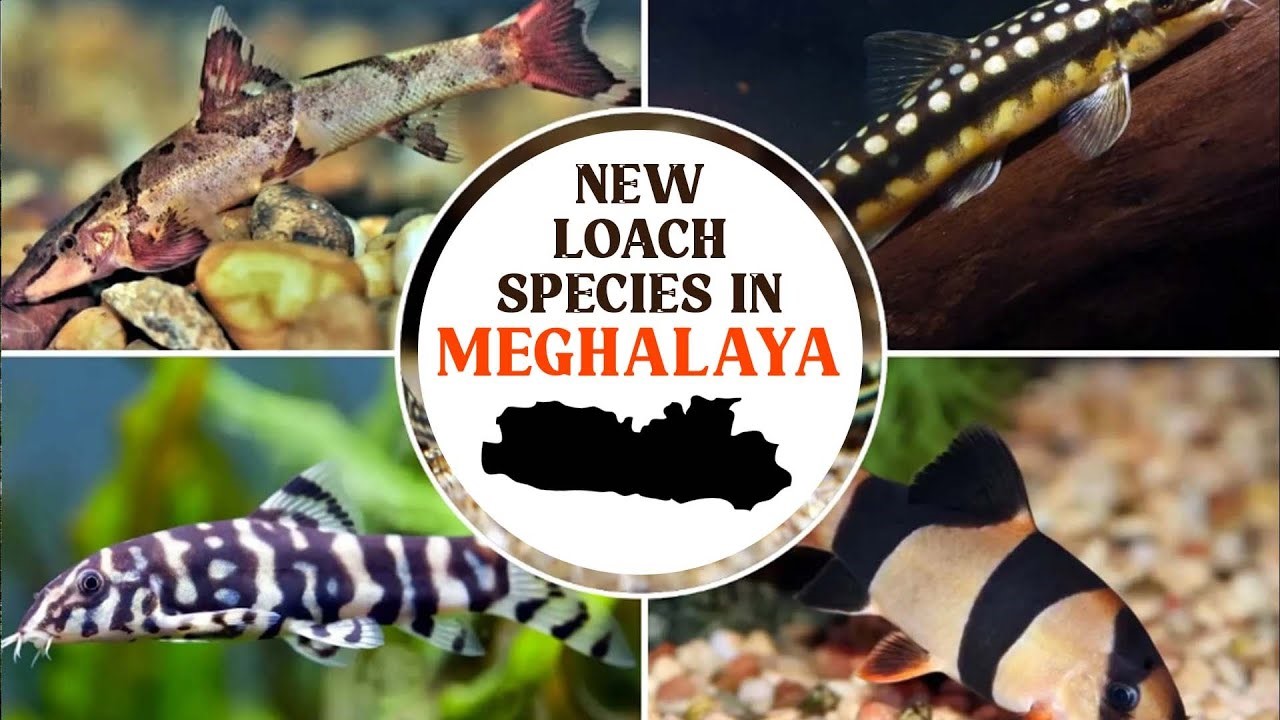New Troglophile Loach Species Found in Meghalaya Cave
New Troglophile Loach Species Found in Meghalaya Cave
Why in News ?
A new fish species, Schistura densiclava, has been discovered in Krem Mawjymbuin cave in Meghalaya’s East Khasi Hills. The troglophile loach can adapt to both cave and overground streams, showcasing unique features like pigmentation and eyesight retention.
Discovery and Research Highlights:
- The new species was discovered by a zoology team led by Kangkan Sarma from Gauhati University.
- The study is published in the Journal of Fish Biology.
- Co-author: K. Mukhim, with 9 other contributing researchers.
- Location: Krem Mawjymbuin, East Khasi Hills, a site also noted for a Shivalinga-like stone formation conflict.
- The fish was found 60 metres inside the cave in a cool, fast-flowing stream (18°C, low oxygen).
Species Traits and Significance
- Named Schistura densiclava – “densiclava” means “thick stripe” in Latin, referring to the fish’s body pattern.
- Family: Nemacheilidae; a bottom-dwelling loach with barbels near the mouth.
- Troglophile nature: Can live in subterranean and surface waters.
- Unlike most cave fish, it retains pigment and vision, which is rare.
- Color: Pale yellow-green with 14–20 grey to black bars and a thick stripe near the dorsal fin.
- Sexual dimorphism:
- Males: Slimmer, puffier cheeks, irregular markings
- Females: Sturdier, consistent body patterns
- Genetic tests confirm it as a new species, likely endemic to this cave system.
Loaches: Key Facts in Point Format● Classification: Belong to superfamily Cobitoidea, comprising ~1,249 species, 107 genera, and 9 families. ● Habitat: Freshwater, bottom-dwelling fish found across Eurasia and northern Africa. ● Diversity: Vary widely in morphology and size, from 23 mm (Pangio longimanus) to 50 cm (Leptobotia elongata). ● Body Features: Most have elongated, narrow bodies, minute embedded scales, and barbels around the mouth. ● Pigmentation: Some species exhibit typical Cobitoidea patterns, others have eel-like or stout forms. ● Special Features: Cobitidae and related families possess a bifid spine below or near the eye. ● Cave Species: Some are blind and adapted to subterranean ecosystems. |





